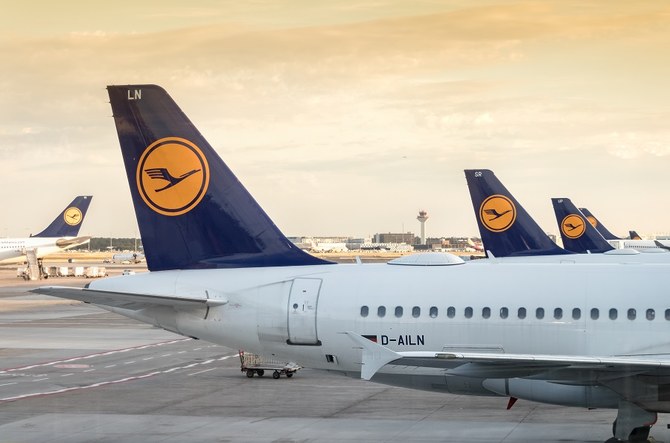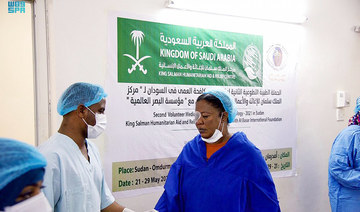RIYADH: The oil and gas industry will need cumulative investments worth $4.3 trillion from 2025 to 2030 to meet growing demand and maintain market stability, according to an analysis.
In its latest report, the International Energy Forum said that the increasing capital expenditure needs are based on an outlook that sees demand for oil rising from 103 million barrels per day in 2023 to 110 million bpd in 2030.
“More investment in new oil and gas supply is needed to meet growing demand and maintain energy market stability, which is the foundation of global economic and social wellbeing,” said Joseph McMonigle, secretary general of the IEF.
He added: “Well-supplied and stable energy markets are critical to making progress on climate because the alternative is high prices and volatility, which undermines public support for the transition as we have seen in the past two years.”
An outlook on global upstream oil and gas capex
According to the report, global upstream oil and gas capital expenditure is expected to grow by $24 billion this year, surpassing $600 billion for the first time in a decade.
IEF highlighted that annual investment must grow by another $135 billion, or 22 percent, to $738 billion by 2030 to ensure adequate supply.
“This estimate for 2030 is 15 percent higher than we assessed a year ago and 41 percent higher than assessed two years ago due primarily to rising costs and a stronger demand outlook,” said the energy think tank in the report, which was released in association with S&P Global.
Roger Diwan, vice president at S&P Global Commodity Insights, said that expected production declines and future demand growth will require re-investing existing cash flows even as the transition proceeds.
According to the energy think tank, North America and Latin America will dominate the projected increase in upstream capital expenditure between now and 2030, with over 60 percent of the overall global investments set to happen in the region.
“While North America is expected to be the largest driver of capex growth to 2030, Latin America will continue to play an increasingly significant role in non-OPEC (Organization of the Petroleum Exporting Countries) supply growth, particularly for conventional crude, with expansions planned for Brazil and Guyana,” said IEF.
It added: “Around 2.2 million bpd in new or expanded conventional projects have been approved and are expected to be produced in Latin America by 2030 – this is more than a third of the total 6 million bpd that has been sanctioned globally.”
The report also noted significant uncertainty around the trajectory for global oil and gas demand and the pace of the energy transition to net zero carbon dioxide emissions.
“Base-case forecasts from consensus-leading organizations diverge by as much as 7 million bpd for 2030 and this gap widens to 27 million bpd when more ambitious climate scenarios are included,” said the energy think tank.
Increased investment supports energy transition
According to IEF, a rise in capital expenditure in upstream oil and gas could support energy transition and ensure energy security.
“A just, orderly, and equitable energy transition requires a foundation of energy security. The past two years have demonstrated the consequences of disorderly transitions: price shocks, shortages, disruptions, political backlash, bitter divisions, and conflict,” said the report.
It added: “Ensuring adequate investment levels can help provide stability and enable a just transition. But it will require the market to remain nimble and flexible to overcome potential hurdles and adapt to new realities.”
IEF, however, highlighted that global conventional crude production would fall by over 20 percent by 2035 without additional drilling.
The energy think tank added that investments in the oil and gas sector made this decade will impact production levels well into the next decade and beyond.
“Continued upstream investment is needed first to offset expected production declines and then to meet future demand growth. Without additional drilling, we estimate that conventional non-OPEC production would decline by 9 million bpdby 2030 and 14 million bpd by 2035,” said IEF.
It added: “The decline rates for non-conventional crude, including US shale, are significantly steeper and would see more than 80 percent decline in the next decade.”
The analysis also revealed that oil and gas companies worldwide have increased their spending to reduce carbon dioxide emissions.
“The upstream sector accounts for around 60 percent of the oil and gas industry’s greenhouse gas emissions. Companies are increasingly focused on reducing Scope 1 and 2 emissions in their upstream operations to meet regulatory requirements, investor expectations, and environmental goals,” said the report.
Scope 1 emissions are “direct emissions” from sources owned or controlled by the company, while Scope 2 denotes emissions released into the atmosphere from the use of purchased energy.
These are also known as indirect emissions, as they are generated at another facility, such as a power station.
According to the report, the increased focus on upstream decarbonization has also contributed to the upwardly revised capex forecast.
IEF also highlighted that energy companies’ strong profits in the past couple of years have helped them invest in capital expenditures directly from operating cash flow, ultimately reducing reliance on debt financing.
“This is a notable change from COVID and pre-COVID years when the primary constraint on investment was capital availability due to weak cash flow, reliance on external capital, and depressed investor appetite,” the release added.
In an additional report released in May, IEF said that to meet widespread electric vehicle targets, the world needs to mine more than double the amount of copper ever excavated in human history.
The analysis noted that electrifying the global vehicle fleet would necessitate the opening of 55 percent more new copper mines by 2035 – and this expansion needs to be encouraged by governments.




















